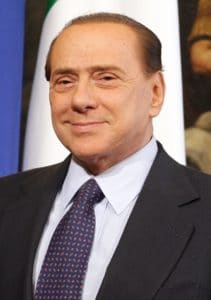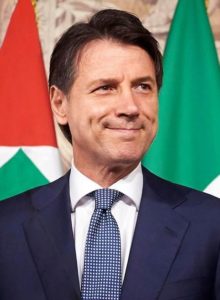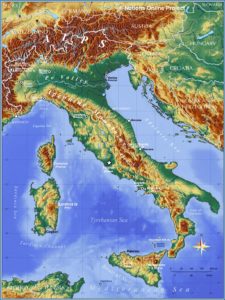
Amidst the Great Recession, Berlusconi resigned in 2011, and his conservative government was replaced by the technocratic cabinet of Mario Monti. Following the 2013 general election, the Vice-Secretary of the Democratic Party Enrico Letta formed a new government at the head of a right-left Grand coalition. In 2014, challenged by the new Secretary of the PD Matteo Renzi, Letta resigned and was replaced by Renzi. The new government started important constitutional reforms such as the abolition of the Senate and a new electoral law. On 4 December the constitutional reform was rejected in a referendum and Renzi resigned; the Foreign Affairs Minister Paolo Gentiloni was appointed new Prime Minister.
In the European migrant crisis of the 2010s, Italy was the entry point and leading destination for most asylum seekers entering the EU. From 2013 to 2018, the country took in over 700,000 migrants and refugees, mainly from sub-Saharan Africa, which caused great strain on the public purse and a surge in the support for far-right or eurosceptic political parties. The 2018 general election was characterized by a strong showing of the Five Star Movement and the League and the university professor Giuseppe Conte became the Prime Minister at the head of a populist coalition between these two parties. However, after only fourteen months the League withdrew its support to Conte, who formed a new unprecedented government coalition between the Five Star Movement and the center-left.

In 2020, Italy was severely hit by a coronavirus pandemic, originating from Wuhan, China. From March to May, Conte’s government imposed a national quarantine, as a measure to limit the spread of the pandemic. The measures, despite being widely approved by the public opinion, were also described as the largest suppression of constitutional rights in the history of the republic. With more than 35,000 confirmed victims, Italy was one of the countries with the highest total number of deaths in the worldwide coronavirus pandemic. The pandemic caused also a severe economic disruption, in which Italy resulted as one of the most affected countries.
Geography:
Italy is located in Southern Europe (it is also considered a part of western Europe). To the north, Italy borders France, Switzerland, Austria, and Slovenia and is roughly delimited by the Alpine watershed, enclosing the Po Valley and the Venetian Plain. To the south, it consists of the entirety of the Italian Peninsula and the two Mediterranean islands of Sicily and Sardinia (the two biggest islands of the Mediterranean), in addition to many smaller islands. The sovereign states of San Marino and the Vatican City are enclaves within Italy, while Campione d’Italia is an Italian exclave in Switzerland.

The country’s total area is 301,230 square kilometres (116,306 sq mi), of which 294,020 km2 (113,522 sq mi) is land and 7,210 km2 (2,784 sq mi) is water. Including the islands, Italy has a coastline and border of 7,600 kilometres (4,722 miles) on the Adriatic, Ionian, Tyrrhenian seas (740 km (460 mi)), and borders shared with France (488 km (303 mi)), Austria (430 km (267 mi)), Slovenia (232 km (144 mi)) and Switzerland (740 km (460 mi)). San Marino (39 km (24 mi)) and Vatican City (3.2 km (2.0 mi)), both enclaves, account for the remainder.
